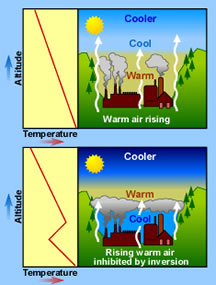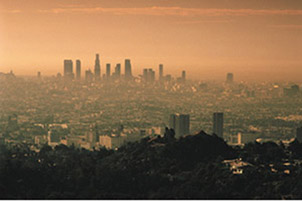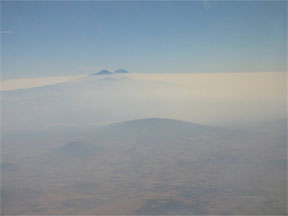Click on image for full size
Courtesy US EPA
Transport and Dispersion
Air pollution doesn't always stay where it was made. It can make its way around the Earth. This is called transport and dispersion and is very complex. There are many things that affect the way pollution is spread, including wind and atmospheric stability.
Wind is caused by differences in pressure in the atmosphere. Wind can carry pollutants away from sources, and sometimes can bring pollutants to clean regions.
Atmospheric stability is the up and down motion of the atmosphere. The air near the surface of the earth is usually warmer in the day because of it absorbs the sun's rays. The warmer air at the surface rises and mixes with the cooler air in the upper atmosphere. This is known as convection. This movement also spreads the polluted air.
Air is stable when warm air is above cool air. This is also called a temperature inversion. During a temperature inversion, air pollution released near the ground is trapped there and can only be moved by strong winds. When a temperature inversion happens over an industrial area, it usually causes smog.
Other weather factors can affect air pollution, like solar radiation, precipitation, and humidity. Solar radiation helps make ozone, a secondary air pollutant. Humidity and precipitation can also help create other dangerous secondary pollutants, like acid rain. Precipitation can also help by washing pollution from the air, removing particulate matter.
Big cities near valleys or mountains often experience air pollution. Los Angeles, Denver, and Mexico City are examples of cities located in basins near mountain ranges. These cities have high air pollution because of their geography.















